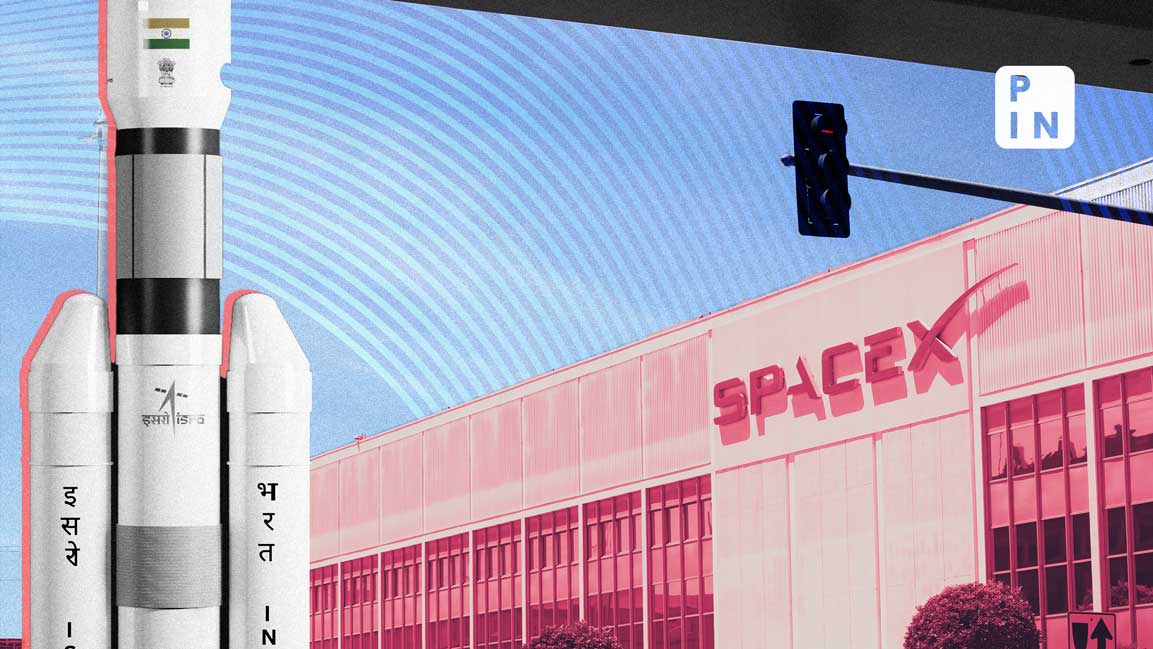- | 6:00 pm
Isro’s GSAT-20 hitches a ride to space on SpaceX’s Falcon-9
Isro is using SpaceX's Falcon-9 rocket as it does not have the capability to place heavy payloads into the geosynchronous transfer orbit

The Indian Space Research Organization (Isro) will use SpaceX’s Falcon-9 rocket to launch a communications satellite in the second quarter of this year, the space body’s commercial arm, NewSpace India Ltd (NSIL), said.
A high-throughput Ka-band satellite (HTS), which allows higher data transmission speeds when compared with traditional communications satellites, Geostationary Satellite-20, or GSAT-20, will be fully funded, owned, and operated by NSIL.
Currently, NSIL owns and operates 11 communication satellites in orbit.
As part of space sector reforms announced by the government in June 2020, NSIL was mandated to build, launch, own, and operate satellites in “demand-driven mode” to meet the service needs of the user.
The first demand-driven satellite mission—GSAT-24—was launched in June 2022, which supports satellite TV services provider TataPlay. GSAT-20 is India’s second demand-driven satellite mission.
The GSAT-20 mission, which will be renamed GSAT-N2, has been specifically designed to meet the demanding service needs of remote or unconnected regions.
GSAT-20 offers cost-effective HTS capacity primarily for meeting broadband, as well as in-flight and maritime connectivity (IFMC) and cellular backhaul service needs, NSIL said.
“Bulk of the HTS capacity on-board GSAT-20 satellite has already been secured by Indian service providers,” NSIL said, without providing details about the customers.
GSAT-20, weighing 4,700 kg, offers Ka-Ka HTS capacity of nearly 48 gpbs, with 32 beams having pan-India coverage including in the Andaman and Nicobar, and the Lakshadweep islands.
“NSIL is realizing GSAT-20 satellite through Isro and will be launched on-board Falcon-9 under a launch service contract between NSIL and SpaceX,” NSIL said.
Why is Isro using SpaceX?
Communications satellites are usually placed in geostationary orbit (GEO) at an altitude of about 35,780 km and follow the direction of earth’s rotation.
Satellites intended for GEO typically utilize a geosynchronous transfer orbit (GTO) as an intermediary stage before reaching their ultimate destination.
Isro is using SpaceX’s Falcon-9 rocket as India does not have the capability to place heavy payloads into GTO.
Isro’s heavy satellite launch rocket GSLV-Mk3 is capable of putting payloads of up to 4,000 kg into GTO.
GSLV-Mk3, a three-stage medium-lift launch vehicle, can carry payloads of up to 8,000 kg into low earth orbits (LEO) of 600 km altitude.
However, SpaceX’s Falcon-9 is capable of carrying payloads up to 8,300 kg into GTO.
This is the first time Isro is using SpaceX as it earlier tapped French firm Arianespace for launching satellites heavier than 4,000 kg.













